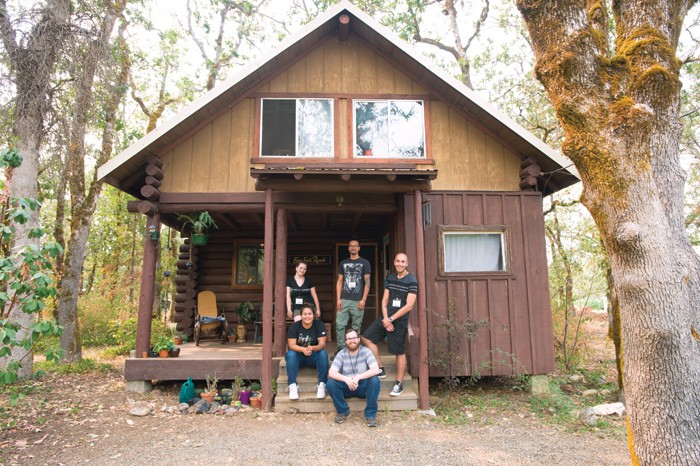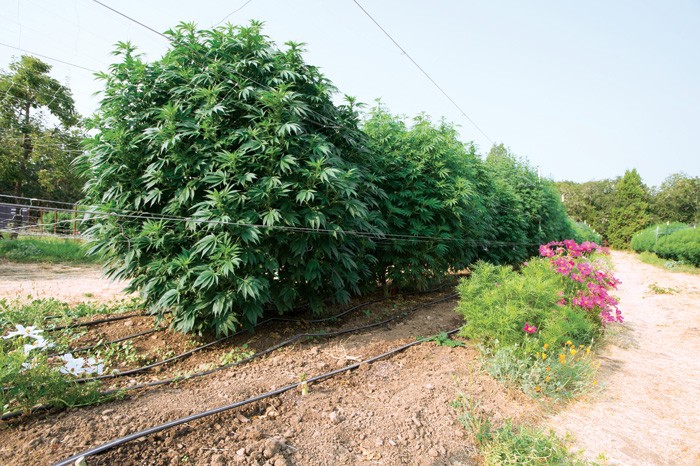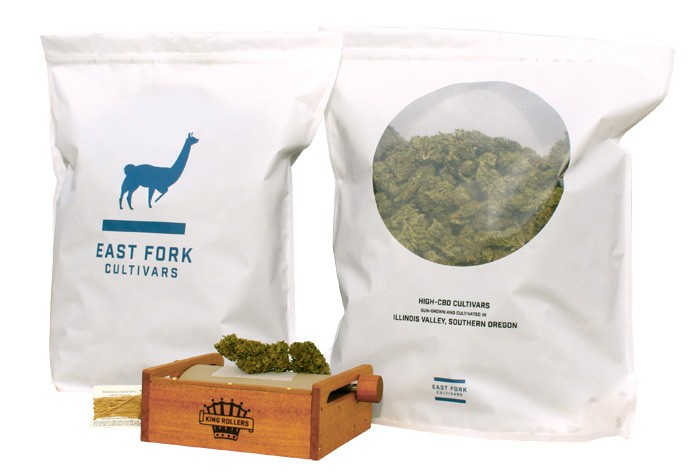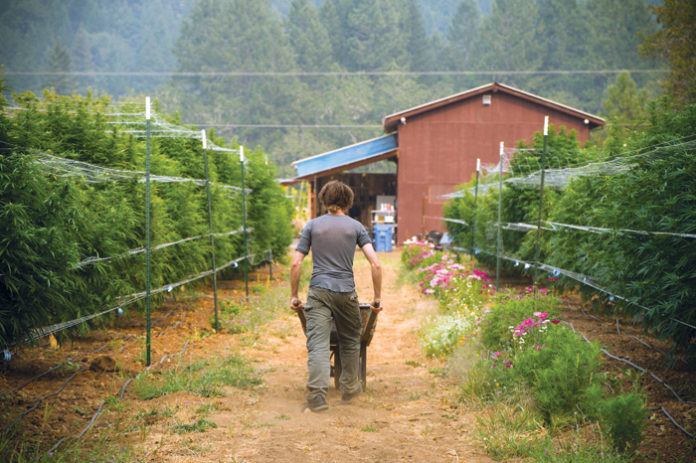East Fork Cultivars use Mother Nature’s help to grow their quality CBD strains.
When it comes to cannabis crops, conventional wisdom says grow indoors and aim for high-yielding, THC-dominant strains. That’s exactly what most growers do.
Recent data from cannabis market research firm Headset indicated CBD-dominant flower—grown indoors or under the sun—made up less than 10 percent of Washington State flower sales in 2016. For most growers in legal states, CBD-heavy strains are a secondary consideration, if even in the crop rotation at all for anything more than oil extraction.
But in Oregon, East Fork Cultivars is growing CBD-dominant hybrid strains and doing it outdoors, at the mercy of Mother Nature. Mason Walker, chief executive officer at EFC, knows it’s a long-term gamble, but he has a lot of faith in the earth—like, literally, the legendary dirt of southern Oregon’s Illinois Valley.
“We grow CBD-rich cannabis using flower-focused cultivation methods. We grow in our native soil, using highly efficient drip irrigation and soil amendments generated onsite, including compost teas, to further take advantage of our location and reduce our impact on the environment,” Walker explained. “For us, it’s about the way we cultivate, not the plant’s historical origin.”

“Growing outdoors has a number of advantages. For starters, it’s far more environmentally sustainable. Our electricity bills are puny,” Walker revealed. The state of Oregon also offers cannabis farmers (and other industries) access to alternative, renewable energy from solar and wind farms. EFC goes to the original power source—the sun. Some of the strains the farm grows have CBD levels of up to 20 percent, and some have a 1:1 ratio of CBD to THC.
“Many of the compounds found in cannabis, particularly minor cannabinoids and terpenes, are only produced with full-spectrum light—in this case provided by the sun, the best source of full-spectrum light,” Walker said. “An element of stress on the plant” also provokes chemical reactions.
“Growing outdoors with inclement weather and pests causes stress reactions in the plant,” he continued. “That stress signals the plant to create a rich array of compounds as defense, leading to a more robust chemistry for us to enjoy upon ingestion.
“If we grew indoors, we’d miss out on this wonderful terroir.”
“Lastly, our farm is located in Southern Oregon, a location known as the tip of the Emerald Triangle. Due to soil, climate, and other environmental factors, this region produces some of the best cannabis in the country. If we grew indoors, we’d miss out on this wonderful terroir.”
Founded by Nathan and Aaron Howard, EFC’s focus on potent CBD strains was inspired by their brother Wesley, who suffered from seizures caused by a rare medical condition. As caretakers, the Howards were motivated to try CBD because of its reputation as an effective alternative treatment for other seizure-prone conditions.
“Through early experiences in Oregon’s medical market, it quickly became clear that people found relief from a range of maladies by using CBD—one of the large advantages of growing CBD-rich plants,” Walker said. “The way medical-grade cannabis has traditionally been grown is that the flower of these plants includes compounds other than CBD that work in concert with CBD to greatly increase its array of benefits.”

“Hemp-derived CBD often isolates just the CBD molecule,” he said. “While CBD by itself can do some nifty things, combining it with other compounds found in cannabis makes something greater than the sum of its parts.
“Most industrial hemp is not grown specifically for its flower,” he continued. “It’s often grown for its biomass [fiber] or seeds [for hemp seed oil]. We have a richer matrix of other compounds than most industrial hemp, including minor cannabinoids, terpenes, and flavonoids that all contribute to additional medical efficacy, as well as nuanced feelings and effects.”
EFC partners with twelve processors to produce infused products, including vaporizer cartridges for cannabis manufacturers like O.penVAPE, Quill, Peak Extracts, Kalapooya Fire, and Toko. The farm’s oils can be found in “three lines of tinctures [Luminous Botanicals, Modern Medicinals, Cascadia Herbals], a caramel [Periodic Edibles], two lines of chocolate [Grön, Peak Extracts], and a line of raw oil [Chronic Creations],” Walker said.

Like a lot of small cannabis farmers and small business owners, Walker worries corporations will come in soon, wielding their money and influence like greedy gophers pulling plants down while they’re prime and tasty, undermining the little guys by the roots. He knows more serious research is needed to unlock the real benefits of CBD and other cannabinoids, but that’s being held up, as ever, by federal restrictions in the United States.
Walker expressed confidence in Oregon state officials’ positive attitude toward the cannabis industry and evident commitment to small, local businesses. Oregon licensing regulations limit EFC to a little less than an acre of fully cultivated land. Last year’s yield was around 1,300 pounds of untrimmed flower.
“This year we’re expecting between 4,000 and 7,000 pounds,” Walker said. “We’ll continue to invest in our soil and hone our cultivation methods, which alone could boost our yield as high as 10,000 pounds on our single license. We also have the option to obtain another license, expand to other states where recreational cannabis is legal, or focus on vertical integration to develop more of our own infused products. Or open a small CBD-focused retail location.”












